Last Chance to Catch NYC's Holiday Notalgia Train
We met the voices of the NYC subway on our nostalgia ride this weekend!


Prior to the 1640s, locals knew Stone Street as Hoogh Straet (or High Street). A few years later, Hoogh Straet was joined with Brewer Street until approximately 1655. Residents and neighbors, upset with the poor conditions of the street, petitioned for the road to be paved using the cobblestone method. Some reports claim Stone Street’s 1658 pavement was the first in the history of Nieuw Amsterdam (renamed New York in 1667).
When the colony of New York fell under British control during the Revolution, Brewer Street was renamed as Duke Street after the Duke of York. In 1794, a group of New Yorkers renamed the passageway Stone Street to commemorate the road as being one of the first in the municipality paved in cobblestone.
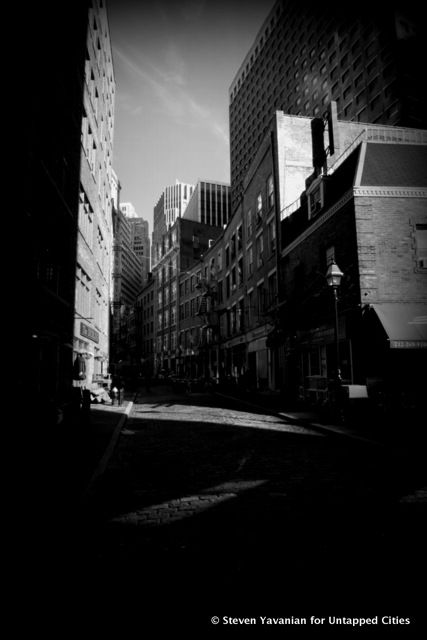
The Great Fire of 1835 wiped out the majority of Lower Manhattan south of Wall Street. In the wake of the devastation, Stone Street was rebuilt to house retail businesses, merchants and importers. Despite Stone Street’s popularity in the 1800’s–with its close proximity to New York’s ports–the area fell into despair as Manhattan headed into the 20th century. During the mid-1800s into the early 1900s, the Eno family owned a large portfolio of real estate along Stone Street. The Eno family was instrumental in the 20th century renaissance of the Stone Street neighborhood.
In 1996, the New York City Landmarks Preservation Commission designated Stone Street as a historical district.
Goldman Sachs’ development of 85 Broad Street was a definitive moment in Stone Street’s history. Prior to 85 Broad Street, Stone Street spanned from Broadway to Hanover Square. The building was almost built near the Museum of Modern Art as opposed to in Lower Manhattan.
During 85 Broad’s development in the late 1970s, archeologist Nan Rothschild uncovered an array of historical findings, including the tavern built by English governor Francis Lovelace in 1670 to replace New York’s first city hall. 85 Broad was built atop one of the “most expensive urban archeological digs ever in America.” Despite the division of Stone Street by 85 Broad, the road maintained some of its historical integrity–some of the underground remains of the Lovelace Tavern can be viewed through glass onsite at the Goldman Sachs building.
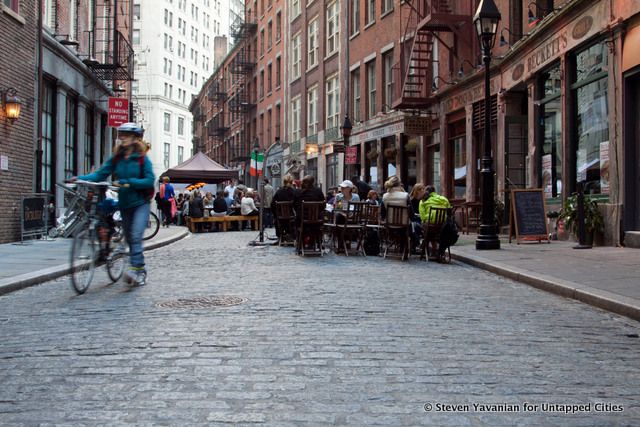
During the 1970s, when the World Trade Center superblocks replaced a once dense multi-use neighborhood, the area emptied out during the evenings. As a result, the Stone Street neighborhood became unsafe and uninviting for visitors. Storefront vacancy extended into the 1990s when the Alliance for Downtown New York and New York City Landmarks Preservation Commission chose the firm Beyer Blinder Belle to create a masterplan. According to the firm, the plan, along with accompanying financial and marketing guidelines, “created a new identity for the Stone Street Historic District. With comprehensive improvements to its streetscape and buildings, carfree cobblestone pavements, new bluestone sidewalks, and traditional lighting, Stone Street has been transformed.”
Peter Poukakos, brother to Harry Poulakakos of the famous Harry’s restaurant, later teamed up with long time pub owner Danny McDonald for the first late-night establishment in the Stone Street District. The duo opened up a Greek-Irish pub with a James Joyce-inspired name: Ulysses. Poukakos himself now owns a large chunk of the buildings and businesses that locals flock to on Stone Street.
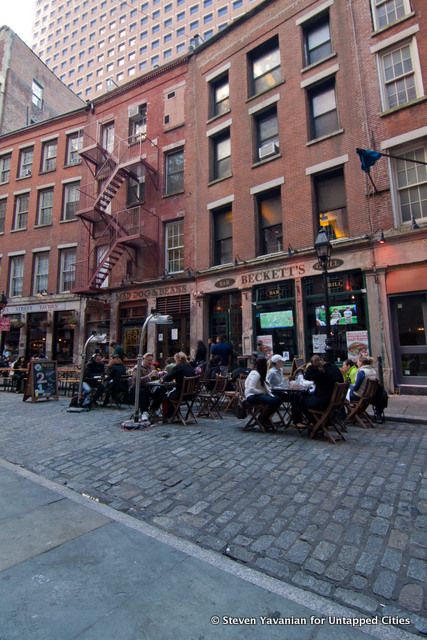

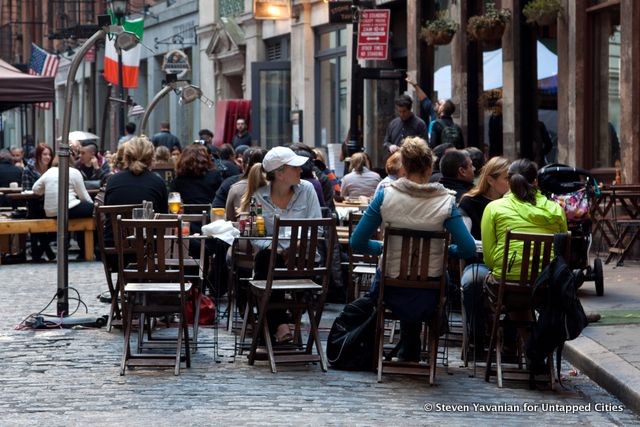
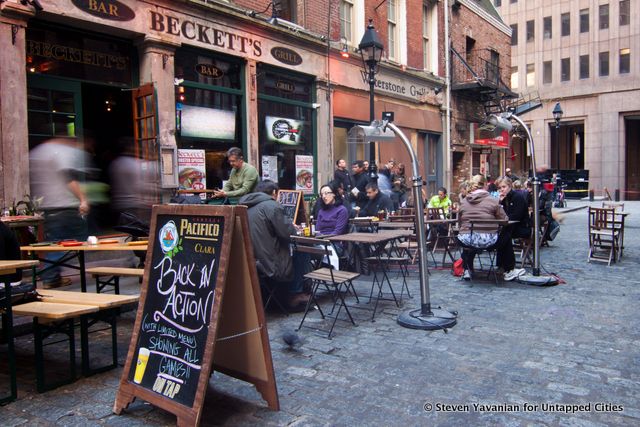
The neighborhood is the present-day backdrop for the popular Stone Street Oyster Festival and home to a variety of restaurants, pubs and pizzerias. Whether permitting, tables are placed in the streets making it one of the few places in New York City that allows for drinking in the streets. With Lower Manhattan’s post-9/11 population resurgence, the Stone Street District is sure to maintain it’s popularity and rich history for years to come.
Next, discover the permanent art installations in downtown Manhattan. All photographs by Steven Yavanian.
Subscribe to our newsletter